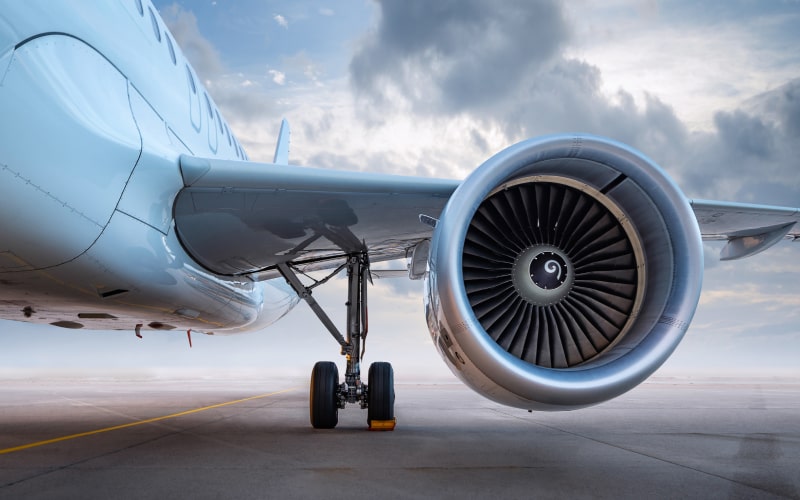Have Specs Ready? Send Us Your RFP for a Fast, Competitive Quote.
Save Big on 36×48 Sheets – Better Yields, Lower Shipping.
Shop Stainless Tubing – Huge Selection, Lower Shipping Rates.


Aerospace Grade metals, also called Aircraft Grade metals or Aviation Grade metals, are typically used for all major components where the “ASM” aerospace specification metals are required. Airplanes, helicopters and spacecraft need materials with high strength-to-weight ratios and typically high corrosion resistance. We carry a wide range of aerospace metals in various shapes, alloys, and sizes, including but not limited to aerospace sheet metal, bars and tubes.
New! Traceability to the Mill! Ask us with your order if you need this type of traceability and we will work with you to provide it!
At Online Metals, we are here to assist you with all your material sourcing needs. If you have any questions, please reach out to us through chat, email at sales@onlinemetals.com, or phone at 888-527-3331. Our team is ready to help you quickly and effectively.
Generally, aluminum makes up between 80% to 90% of the structural weight of most modern commercial aircraft. What makes aluminum such a great material for aircraft is its high strength-to-weight ratio, corrosion resistance, and ease of fabrication. It is used in aircraft fuselages, wings, and other structural components to reduce weight and improve fuel efficiency.
While not the most prevalent material used in aerospace, largely due to the weight and surface corrosion characteristics, aerospace steel bar can be found in many manufactured aircraft components. Aerospace steel tubes are also used for structural elements in aircraft bodies. Alloy 4130 is the most commonly used aerospace steel due to the extra hardness of this metal.
The range of Nickel alloys used in aerospace represents alloys that provide extremely high resistance to corrosion and heat. With both high mechanical strength as well as formability and weldability, these nickel alloys in aerospace are used in a vast range of parts and components that can be made from our Nickel bar and Nickel sheet metals.
The high temperature tolerance and incredible corrosion resistance of this material is largely what makes stainless steel in aerospace applications such a popular choice. Although the material is much heavier than a number of the alternatives, aerospace stainless steel is a great choice for parts that will be subjected to high stress and impact, such as landing gear and exhaust components. A range of stainless steel materials are ideally suited to aerospace applications, including the range of Inconel alloys.
The push for lighter, yet stronger, and more fuel-efficient aircraft, from personal and commercial planes to helicopters, is one reason that titanium in aerospace applications is so popular. The Titanium aerospace applications range from engine parts to frames and landing gear. Aerospace titanium alloys can withstand extreme temperature ranges from subzero to 1,000 degrees Fahrenheit, making it an ideal performer on earth and in space.
Aerospace-grade materials refer to materials that are specifically designed and manufactured to meet the demanding requirements of the aerospace industry. These materials possess exceptional strength, lightweight properties, high temperature resistance, and excellent corrosion resistance, enabling them to withstand the extreme conditions experienced in aircraft and spacecraft. They undergo rigorous testing and certification processes to ensure their reliability and performance in aerospace applications.
The aerospace industry uses a variety of materials for different components and purposes. Some common materials used in aerospace include:
Aerospace grade aluminum has good corrosion resistance, but it can still corrode. Coatings and maintenance are done to prevent rusting or corrosion in aerospace applications.
Aluminum is one of the most common materials used in the aerospace industry. Its combination of lightweight properties, strength, and corrosion resistance makes it suitable for various aircraft components. Additionally, aluminum alloys offer versatility and ease of manufacturing, contributing to their widespread use in aerospace applications.
ASM, or the American Society for Metals, is important for the aerospace industry as it plays a crucial role in advancing materials science and engineering knowledge. The organization provides valuable resources, expertise, and publications that aid in the development of aerospace-grade materials, ensuring their reliability, safety, and performance in aircraft and spacecraft.
High-strength low-alloy (HSLA) steel is commonly used in planes. Specifically, aerospace-grade steel alloys, such as 4340 steel or 300M steel, are utilized for critical components like landing gears and structural parts that require excellent strength and toughness.